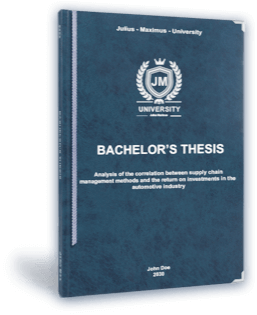
Subject-verb agreement is a vital part of language rules, shaping the backbone of coherent English communication. It ensures that subjects and verbs coincide in number, i.e., singular subjects take singular verbs, while plural subjects take plural verbs. In this article, we’ll learn how to master these rules and how to avoid mistakes.
Definition: Subject-verb agreement
Person and number (or quantity) are one of the fundamental elements when it comes to verb conjugation because if the number of subjects changes, the verb must follow accordingly to ensure subject-verb agreement.
Essentially, since English doesn’t use grammatical gender outside of pronouns, the verb needs to match number (singular or plural) and person (first, second, or third). However, there are special rules when it comes to subject-verb agreement, which we’ll explain in this article.

Compound subjects
Compound subjects are two or more nouns or pronouns that are connected by conjunctions like “and,” “or,” or “nor.” The rules in terms of subject-verb agreement are:
- All subjects linked with “and” → plural verb
- Subjects linked with “or” or “nor” → verb agrees with closest one
- Subjects that refer to a single entity, e.g., “mac and cheese” → singular verb
When two or more subjects are joined by “and,” the verb should be plural.
Compound subjects joined by “or” or “nor” take a verb that agrees with the subject closest to it, meaning the verb can be either singular or plural. This is also known as the proximity rule.
When compound subjects refer to a single entity or idea, use a singular verb.
Prepositional phrases
The fourth rule of subject-verb agreement states that when a subject is followed by a prepositional phrase (e.g., group of people) the verb must agree with the main subject, not with the noun in the prepositional phrase. Common prepositions that lead to this confusion are: of, with, along with, together with, as well as, etc.
Indefinite pronouns
Indefinite pronouns are used to refer to non-specific persons, items, and places, such as “nobody,” “several,” and “everything.” The fifth rule states that they are considered singular subjects unless they refer to multiple items.
| Verb form | Indefinite pronouns | Examples |
|---|---|---|
| Singular | Pronouns ending in -thing, -body, -one, or -where Other pronouns like every, each, one, another |
|
| Plural | Many, others, few, several, both |
|
| Singular/plural | None, all, some, most, more, any, either |
|
Wishes
When it comes to wishes or requests, verbs are used in plural form in spite of the pronoun they’re linked with.
Amounts & time
In the case of percentages, proportions, periods of time, distance, or amounts of money, there are two options when it comes to subject-verb agreement:
- Singular if seen as a single entity (e.g., total amount or group)
- Plural if seen as individual units (e.g., multiple countable items)
- ✓ 3D live preview of your individual configuration
- ✓ Free express delivery for every single purchase
- ✓ Top-notch bindings with customised embossing

Common mistakes
Since there are so many rules when it comes to subject-verb agreement, there are numerous mistakes you can make. We’ve listed the most common ones down below.
Subjects separated from verbs
One could make subject-verb agreement mistakes when the verb doesn’t come directly after the subject. In long sentences with phrases separating the subject and verb, one should ensure they match the verb with the correct subject for subject-verb agreement.
| ❌ Incorrect | ✅ Correct |
|---|---|
| A tray of eggs were in his house | A tray of eggs was in his house. |
| Observers of the match was disappointed. | Observers of the match were disappointed. |
| The ten groups at the end is moving to the finals. | The ten groups at the end are moving to the finals. |
Misusing “as well as” and “and”
There is a difference between “as well” and the conjunction “and.” When one uses “and” to connect subjects, one should always use a plural verb. In contrast, some phrases like “as well as,” or “along” have no connection to the verb. So, the verb takes the form of the subject.
| ❌ Incorrect | ✅ Correct |
|---|---|
| The mother and her sons loves the film. | The mother and her sons love the film. |
| The mother, along with her sons, love the film. | The mother, along with her sons, loves the film. |
| The mother, as well as her sons, love the film. | The mother, as well as her sons, loves the film. |
Collective nouns
A collective noun refers to a phrase used to collectively describe a group of people or things. Collective nouns may take a singular verb in US English and a plural one in UK English. This rule is maintained in regard to company names.
| US English | UK English |
|---|---|
| The staff is happy. | The staff are happy. |
| The team wins. | The team win. |
| The committee attends an annual meeting. | The committee attend an annual meeting. |
| Target is a popular shopping shop. | Target is a popular shopping shop. |
| The population is ill. | The population are ill. |
Acronyms & abbreviations
When using acronyms and abbreviations, the verb takes a singular verb unless abbreviation letters represent a collective noun or plural subjects.
FAQs
Subject-verb agreement ensures that the subject and verb in a sentence match in number. This means that according to subject-verb agreement, a singular subject takes a singular verb and vice versa.
Some subject-verb agreement rules include:
- Subjects joined by “and” usually take a plural verb
- Proximity rule with “or” and “nor”
- Indefinite pronouns are usually singular
- The dog barks at strangers.
- The dogs bark at strangers.
- She writes
- They write
- Each of the students is
- Both of the answers are
- There is a problem with the code.
- There are several issues to fix.
- Neither the teacher nor the students know the answer.
- The team wins every match.